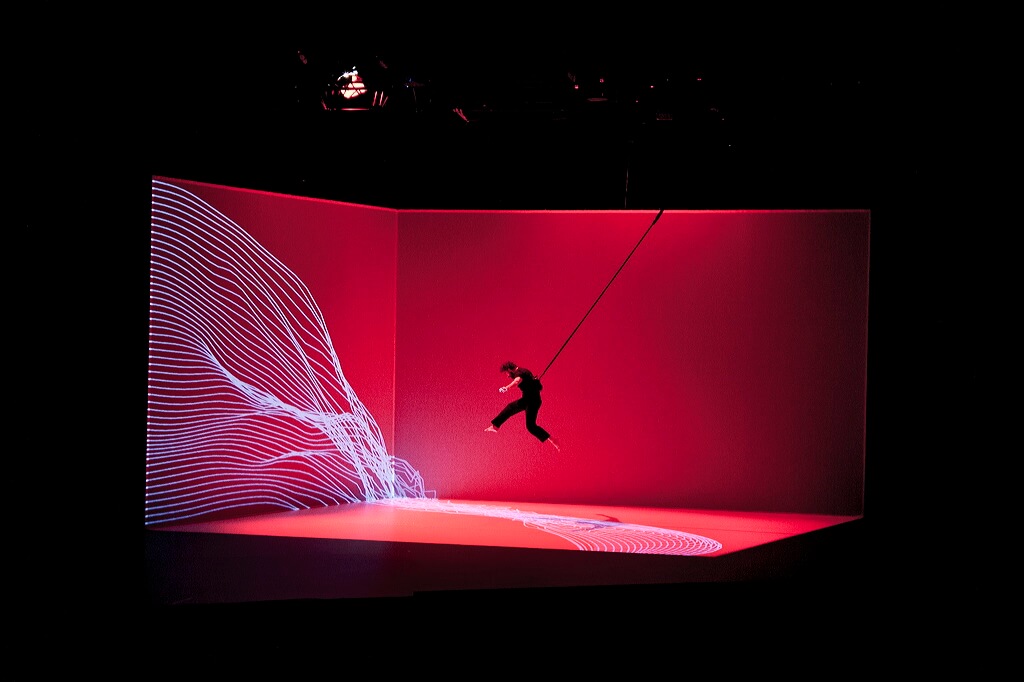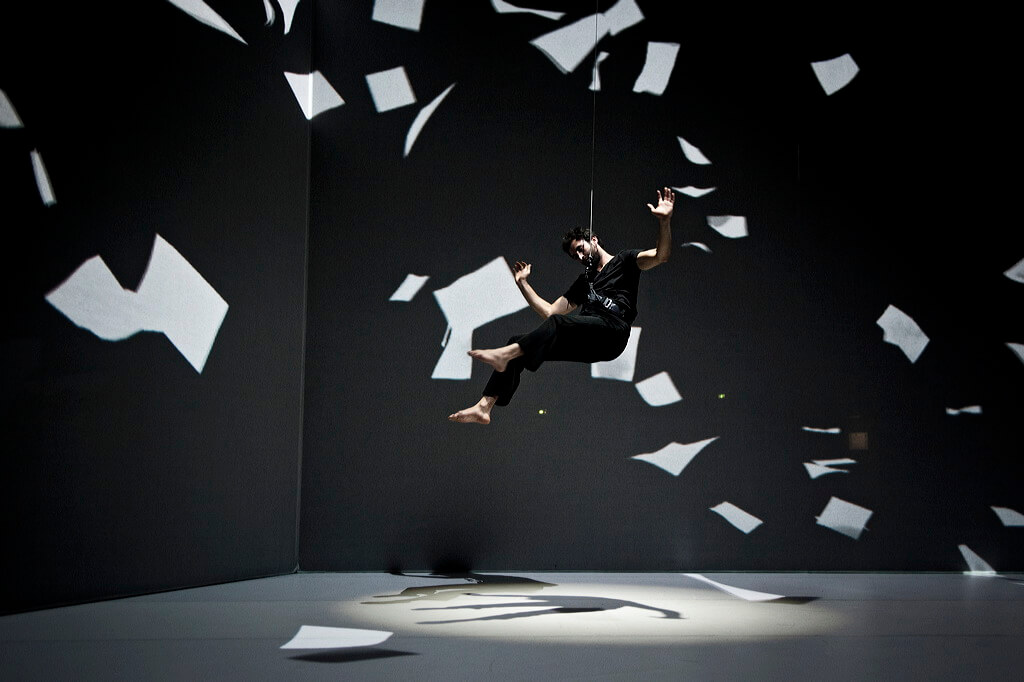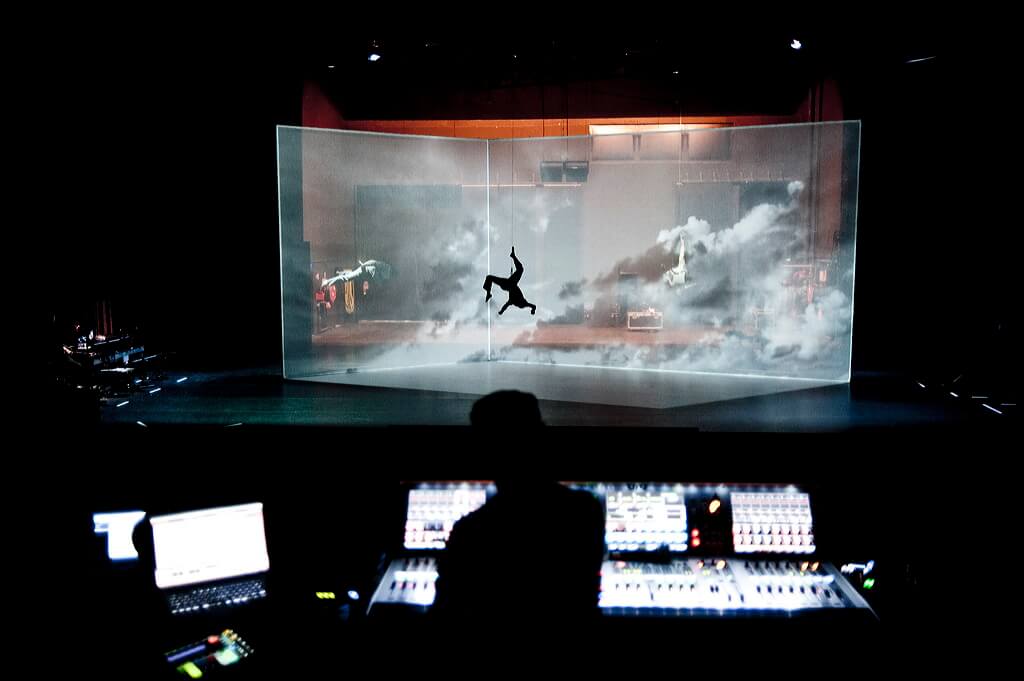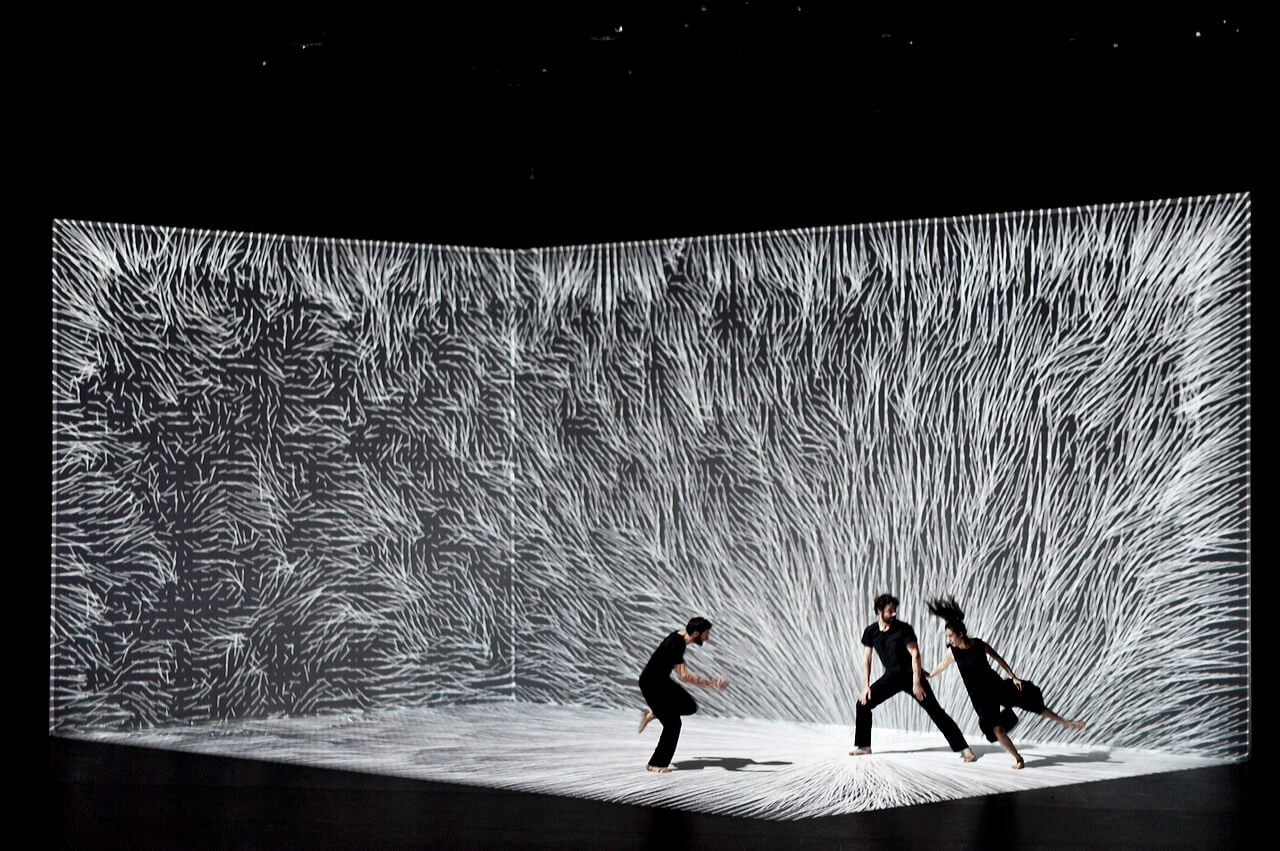Le mouvement de l'air is the latest masterpiece of French artists Adrien M / Claire B, a performance with acrobatic and digital choreography combined with modern and generative graphics.
Adrien was so kind to tell us some information about the technical details, and how they combined different softwares and technologies in this stunning performance:
We have discovered Vezér 2 years ago, we were really interested in things like Iannix, but it wasn't easy to insert it in our workflow. We are developing our own sets of tools based on eMotion since 2006. eMotion is an experimental physically based animation system, aimed to build realtime performance. In this new project called "The movement of air" we inaugurated a new workflow and software pipeline.

The toolchain is: eMotion - Millumin2 - Vezér - Quartz Composer eMotion is the conductor, it drive all the scene of the show, and distribute focus to the other applications or compositions. It provides some realtime animation & rendering also, mostly for the materials at the beginning of the performance : mass-spring, tornado, particles.
Millumin 2 is an important evolution of the mapping software. It's a tool that manages video on stage for theaters, video mappings and interactive installations - See more at: http://millumin.com/. This new version is modular and the wonderful team behind it allowed and helped us to build custom plug-in to use new physical models (soft bodies, 3D objects collision, etc). All the parameters of the plug-in are automatically available via an OSC API. The mapping is made with a 2000 x 2000 x 60fps Syphon texture . The different states of mapping are triggered with eMotion.
Quartz Composer : it's an old app for building simple graphical algorithm and materials. We still use it for simple purpose. The composition are interpreted inside eMotion, and input port are also automatically mapped with an OSC API, avoiding a few bugs in Apple QC's OSC implementation.
Vezér is used for writing the variation of physicals parameters. It's a "micro" writing (opposite to a macro writing : an other level of abstraction, that is for exemple the order of the scene). Some Vezér comps are very simple, like a simple fade, but others have a lots of tracks, including the lights. Its a very useful tool to graphically set up the varying lights with the video. Vezér also sends feedback information to the iPad that control the show (with TouchOSC).

Everything is done with a simple Hackintosh, with a previous gen graphic card, all is running on 10.9.5 (there's too much bugs with post mavericks graphics drivers). We use hacked beamers that make only black and white images but with twice the lumens (Thanks to Eliott Woods and Joanie Lemercier).

Claire Bardainne is a graphist and stage designer. I’m a coder and a juggler. Vezér is a tool that allow Claire to manipulate and write the scene, all is about which parameter we define, and how she can write the variation of this parameter to tell a story. It this way Vezér is an important link in our work : it allow us to better work together. We work a lot with improvisation. Recording OSC is a way to keep tracks on theses improvisations, and building the scenes of the piece.

Please visit the project's website for more information about the artists and the complete cast of the performance.